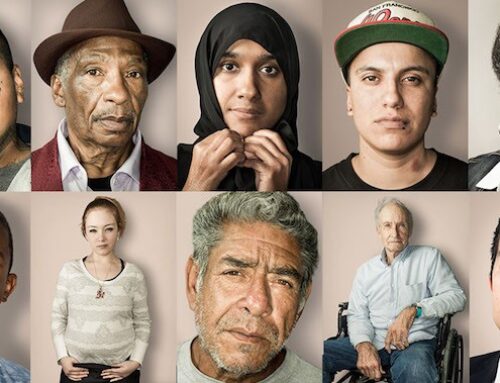While more than 75 percent of CEOs say gender equality is part of their top 10 business priorities, women remain underrepresented across every level of the corporate pipeline—comprising just 37 percent of management positions and 19 percent of C-Suite positions, according to a recent study from McKinsey and LeanIn.org.
This gender disparity doesn’t stem from the inability of women to perform at top levels. Catalyst found that Fortune 500 companies with women on their boards had significantly higher returns on equity (53 percent), better sales (42 percent), and a two-thirds greater ROI than companies with all-male boards. Instead, a recent Bersin by Deloitte brief suggests that the problem comes down to culture: It turns out that most organizations simply do not provide an environment that supports diverse leaders or encourages everyone to strive for senior positions.
The lack of cultural support for minorities leads to decreased confidence, ultimately making it much more difficult for women to pursue leadership roles. Rather than addressing the existing problem as solely a gender balance issue, companies should work to foster a culture of inclusion that embraces diversity and encourages everyone to strive towards leadership opportunities. Bersin by Deloitte research showed that organisations with strong cultures of leadership growth also happened to have the highest degree of gender diversity.
Let’s take a deeper dive into the impact of culture on how women perceive themselves, the effect of that in their personal and professional lives and how cultures provide or limit the opportunities women have or not in the society.
Historically men were seen as the breadwinners and women were the caretakers. And subconsciously that has stayed with us. Women have always been told to focus more on home responsibilities and limited their access to the outside world. This, in fact, has resulted in the lack of participation of women in leadership and work outside the homes and beside motherhood and caregiving.
As the years have passed, some cultures have evolved and been modified and sadly some have not. In some cultures, women demanded their equal rights for making it possible for them to have their place in society and in the working sector and some has not evolved as much.
For cultures that evolved with societies, women have been excelling in all the fields they enter. Regardless of gender barriers, women have created a space for themselves. Equal rights are given to women in policies, yet we see them struggle for the fair chance in practices. Men have outnumbered women and deprived them of a fair chance of leadership.
“The updated society needs an updated culture.”
The equal number is not equality

Some people confuse the word ‘equality’ with ‘equal numbers’. Do not flood your office with female employees if they do not have the right talent and are not the right fit for the business.
Just because there are more women employed at an organisation, does not mean it’s women-friendly. There are a number of companies and functions in general—such as healthcare and HR—that tend to have a higher proportion of women. It’s impossible to draw a conclusion about the friendliness or inclusivity of a workplace from numbers alone. It’s usually a better idea to look at representation across all the various levels of an organisation. The basic idea is that women at the top, who are leading the team or have climbed the ladder, tend to self-perpetuate a more progressive organisation.
If your leadership team lacks meaningful female representation, it’s time to get to work and start asking questions to shape the future. When it comes to equality, women deserve an equal chance and value, not the equal number of co-workers. The way women are treated at work and the work environment should not be gender-biased. If your company lacks women participation address the issue. Study the problems and execute the proper solution to include more participation. And STOP treating women as special purely because they are women (that’s biased too). Treat them as normal human beings.
Change it and maintain it

Communication is the key.
Ask questions such as “what’s the best organisation you can imagine? What are the behaviours that you’d like to see implemented in your organisation? What are the cultural unconscious biases that is preventing growth and needs to be addressed? Are all your employees sharing the organisation’s cultural values? What opportunities might we be missing if we don’t change?” To truly become an equal place to work, it takes time and resources, and a willingness to get to the bottom of what’s holding you back. Taking actions to create change is easy on paper but maintaining it is where the work starts. You cannot just plant a seed and expect it to grow perfectly. It needs care and alignment. All the changes should be maintained properly. The senior leaders and their commitment to change play a crucial role here. The seniors must know what is going on in the workspace and if all the employees are satisfied with the environment or not. Google’s leadership team, for example, has published research reports that recognise that their female employees can benefit from many kinds of perks that focus on their specific needs, from expectant mothers parking to maternity leaves. The executives at Google took this information and acted on it, all in an attempt to remedy deep-lying cultural issues. These changes may seem minor but prove important for the women-friendly environment.
Do men have it easy?

In general, if you ask males how they feel about equality in the workplace you will get favourable responses. Companies do well in surveys from this perspective but get less favourable responses when the same questions are answered of minorities, like women.
Pew Research found that women are about three times as likely as men to say their gender has made it harder for them to succeed at their job. Men are not experiencing these challenges as regularly as women do therefore they have a completely different viewpoint and perception on the issues and it’s also harder for them to digest the existence of these problems. The gender bias in nature has also favoured men for a long time.
In general, men and women working in the same place end up having different work experiences. To understand it in a better way, many times men are considered for the promotion and women (being deserving) are still rooted out. Mothers are often judged because they are still assumed as the main caretakers of the children. This type of behaviour contributes to the lack of women participation. Considering the competition, women always have to put extra efforts as compared to men. It is important to understand that considering someone as a leader should totally depend on the talent, not the gender or conditions outside the work environment. Keeping the talent in mind, we could give women a fair opportunity to lead.
2020 and still inequality is a serious issue

Inequality still seems to be an issue which is unsolved. Equal education rights, equal career opportunities, equal wages are still not accomplished. The toxic culture may seem like a problem, but for how long? We need to have a new perspective on women participation and rights. Women in leadership should not be an issue we are facing in 2020. With all the updated culture and environment, women still have to struggle. Many policies and measures are put in place to make them feel equal but they are not practised. We need to change our perspective and stop stereotyping women. We have all seen how women can excel in every field, given the fair opportunity and resources without assumptions and judgement. Both of which are rooted in men and women’s subconscious minds and deeply linked with the culture they were brought up in.
There are many ways to address these issues and I am here to help but for the time being here are four key practices your organisation can adopt to help foster a culture that supports female employees throughout their career journeys.
1) Teach Employees (including and especially those in leadership positions) About Diversity, Conflict and Bias
2) Listen to Career Concerns and Desires
3) Proactively Create an Inclusive Culture
4) Set and Measure Diversity and Inclusion Goals
To read the full article on these practices and more, for building a supportive culture, follow me and wait for my next article.
To conclude, blaming culture for the unfair treatment of women is a fact that cannot be overlooked. We keep updating our apps, then why can’t we update our thoughts. Lack of women in leadership is due to the lack of participation of women. Their lack of participation is rooted in organisation and national cultures. Giving them an equal platform would surely increase the women leaders’ ratio. It would not happen magically though. Only with proper strategies, efforts and measures, we could give women finally the place they deserve. More women in leadership, would not only create a better place to work but also be more adaptive and productive. Modern problems need modern solutions.





